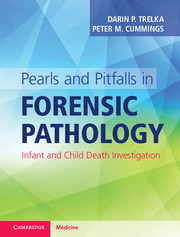
- Publisher:
- Cambridge University Press
- Online publication date:
- September 2016
- Print publication year:
- 2015
- Online ISBN:
- 9781139628945
Last updated 10th July 2024: Online ordering is currently unavailable due to technical issues. We apologise for any delays responding to customers while we resolve this. For further updates please visit our website https://www.cambridge.org/news-and-insights/technical-incident


This practical text guides the reader in infant and child death investigation from the moment the phone rings to the final signature on the death certificate. Using an easily understood conversational writing style, the text imparts up-to-date, practice-based information on approaches to death investigation, clarifying misunderstandings and supplementing training gaps. Chapters also impart personal experiences relating to policy, procedure, standards, and the anticipation of problems during death investigations. Interspersed throughout the text are procedural standards from the National Association of Medical Examiners and Centers for Disease Control and Prevention, as well as high-quality images and observations of effective administrative and management strategies for offices involved with death investigations. The book is packaged with a password, giving users online access to all text and images. Pearls and Pitfalls in Forensic Pathology: Infant and Child Death Investigation is an essential resource for medicolegal death investigators, coroners, medical examiners, forensic pathologists, forensic laboratorians and attorneys.
 Loading metrics...
Loading metrics...
* Views captured on Cambridge Core between #date#. This data will be updated every 24 hours.
Usage data cannot currently be displayed.